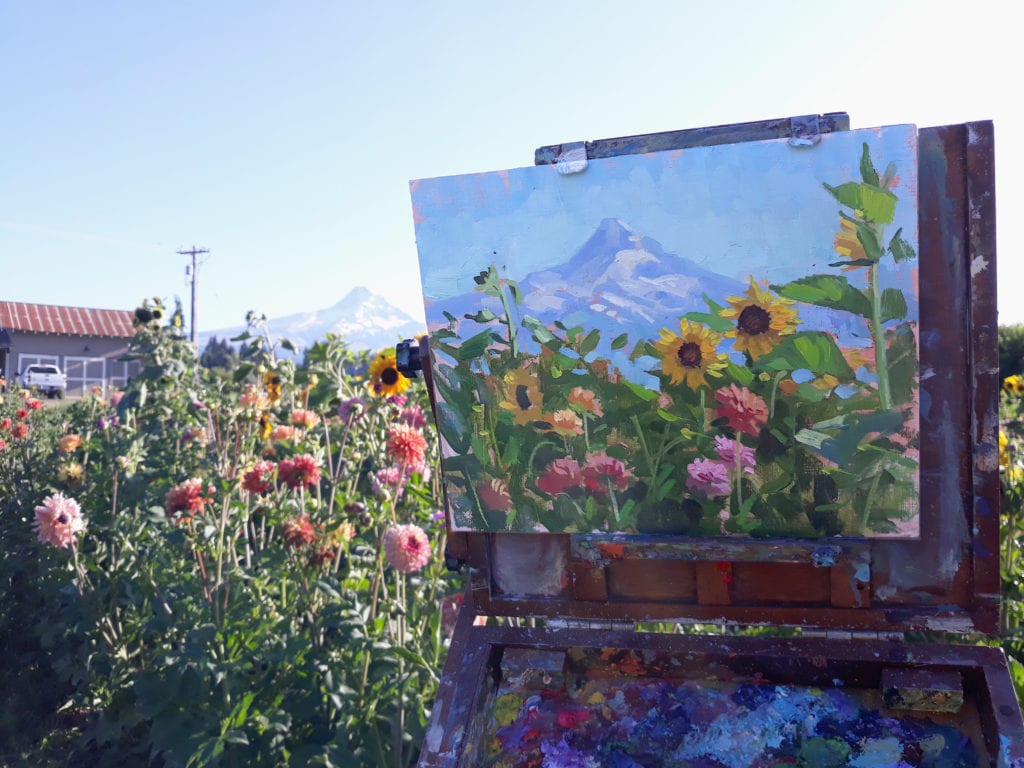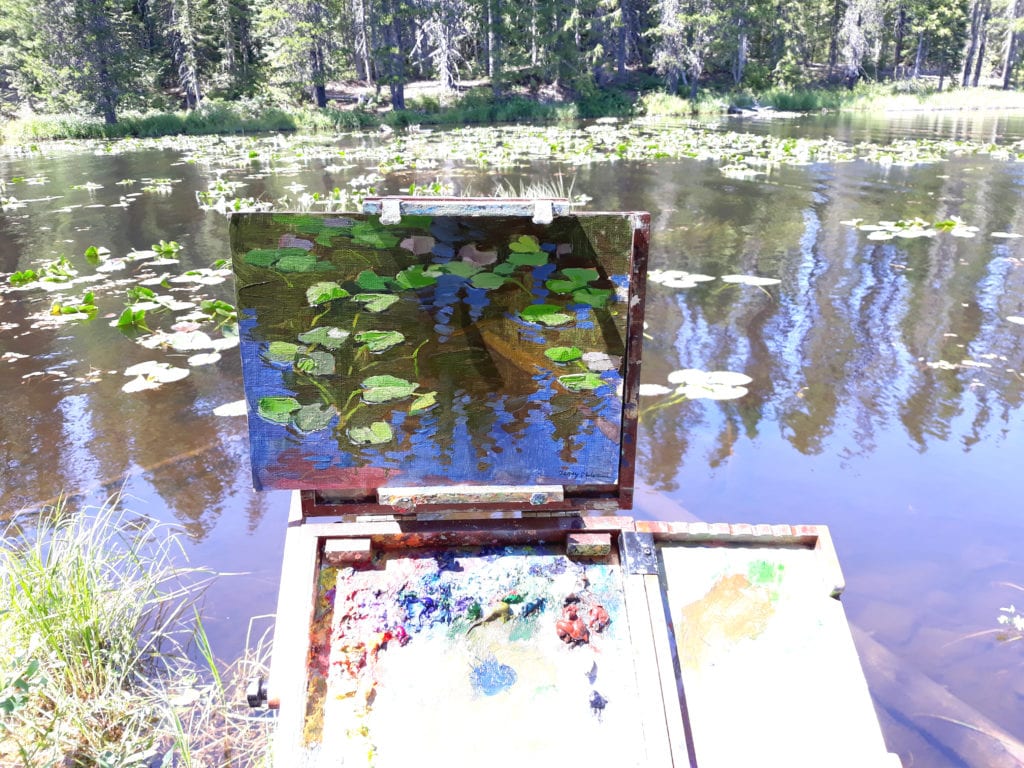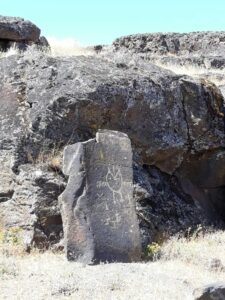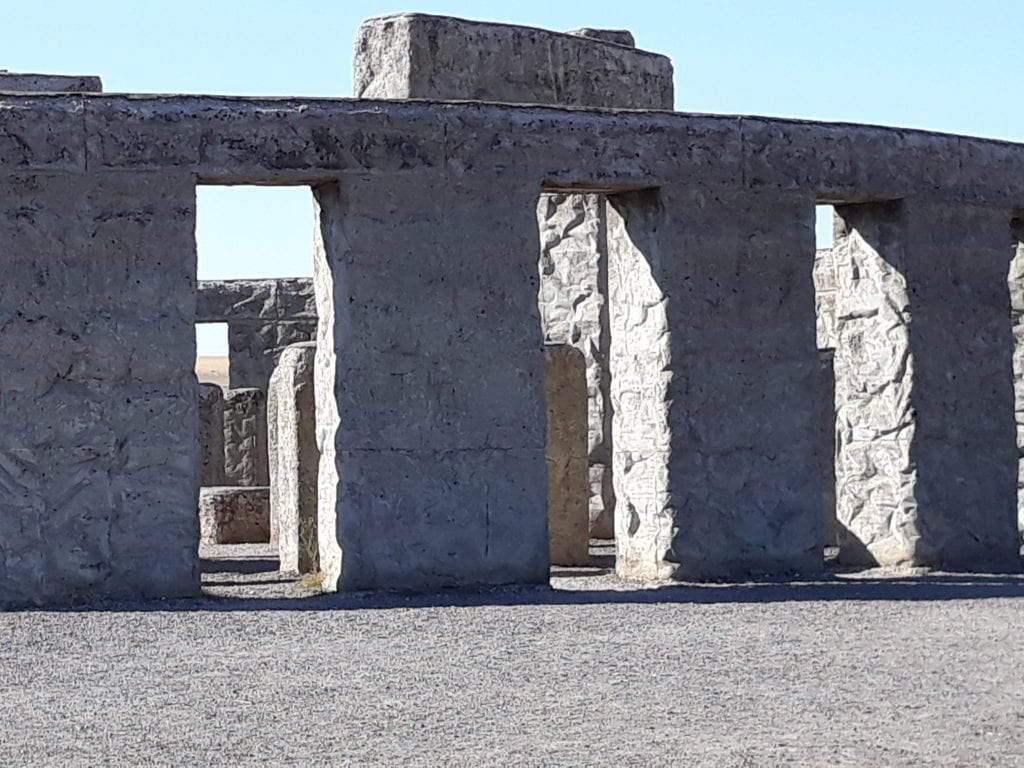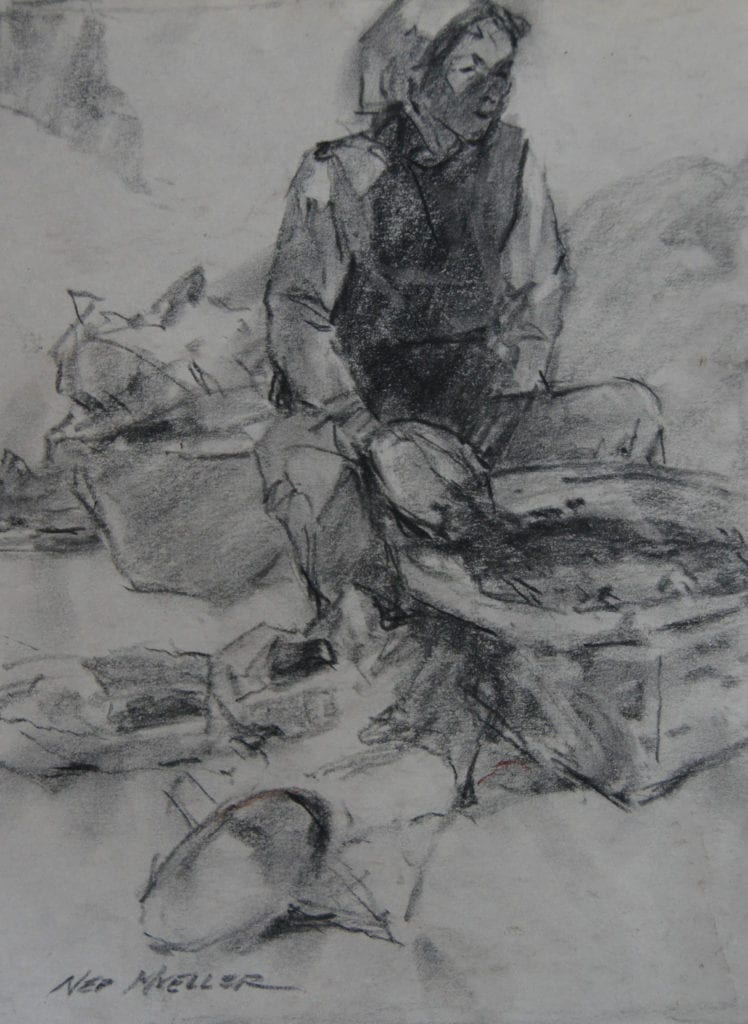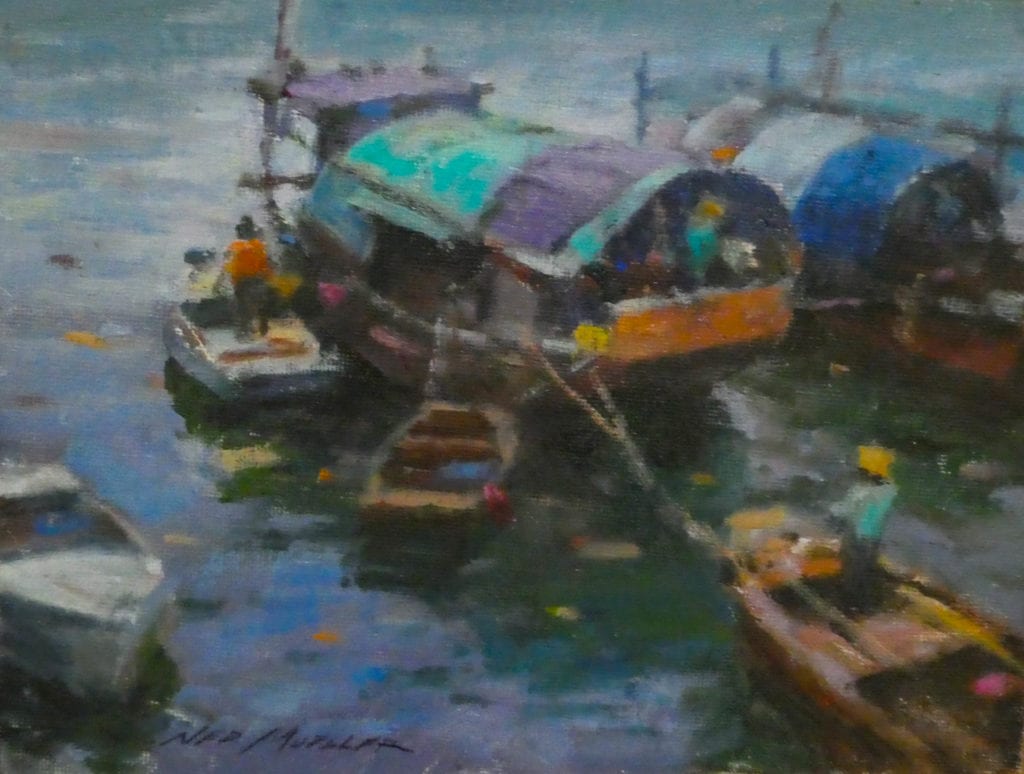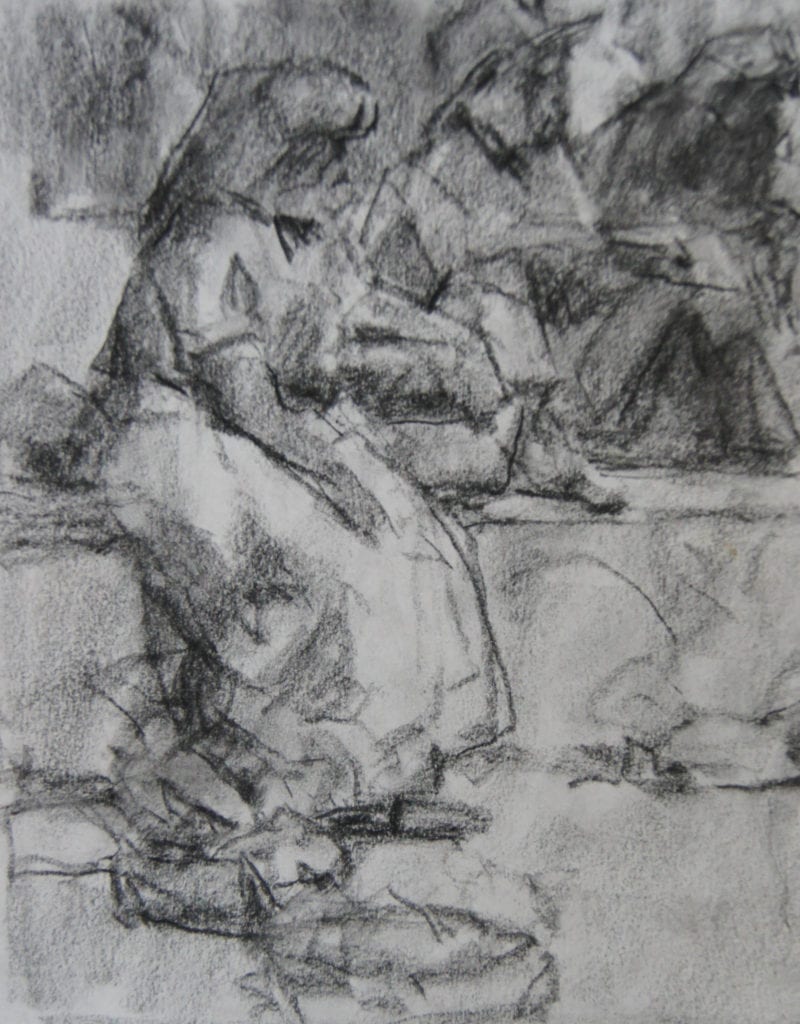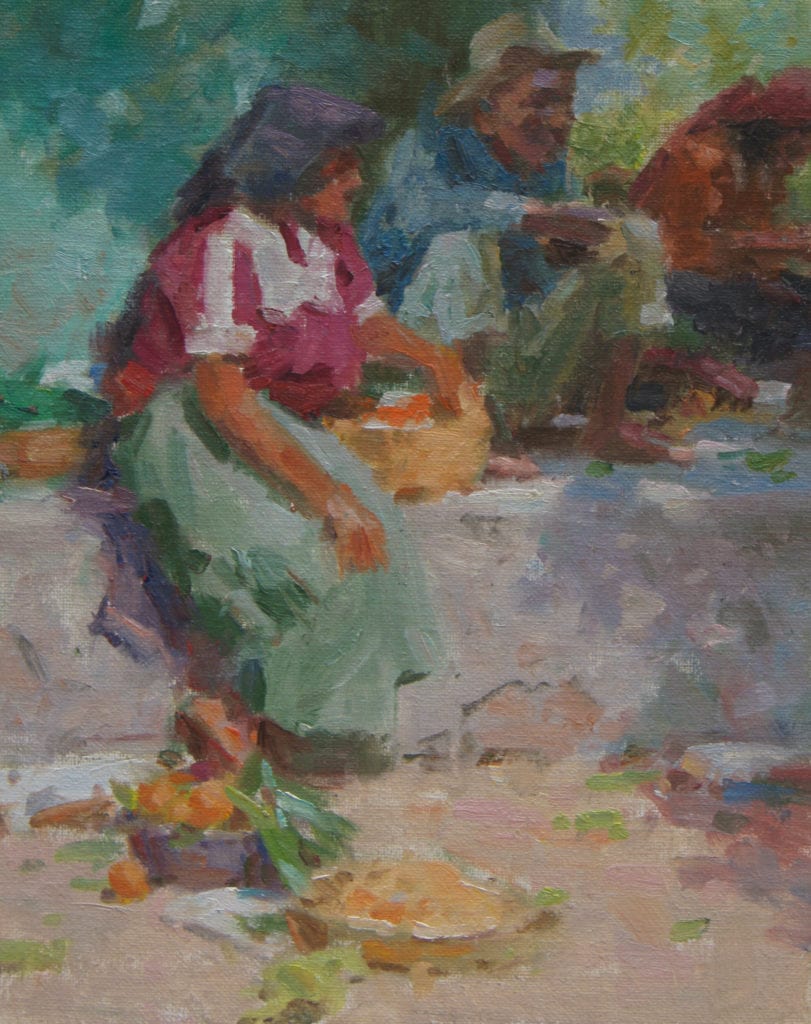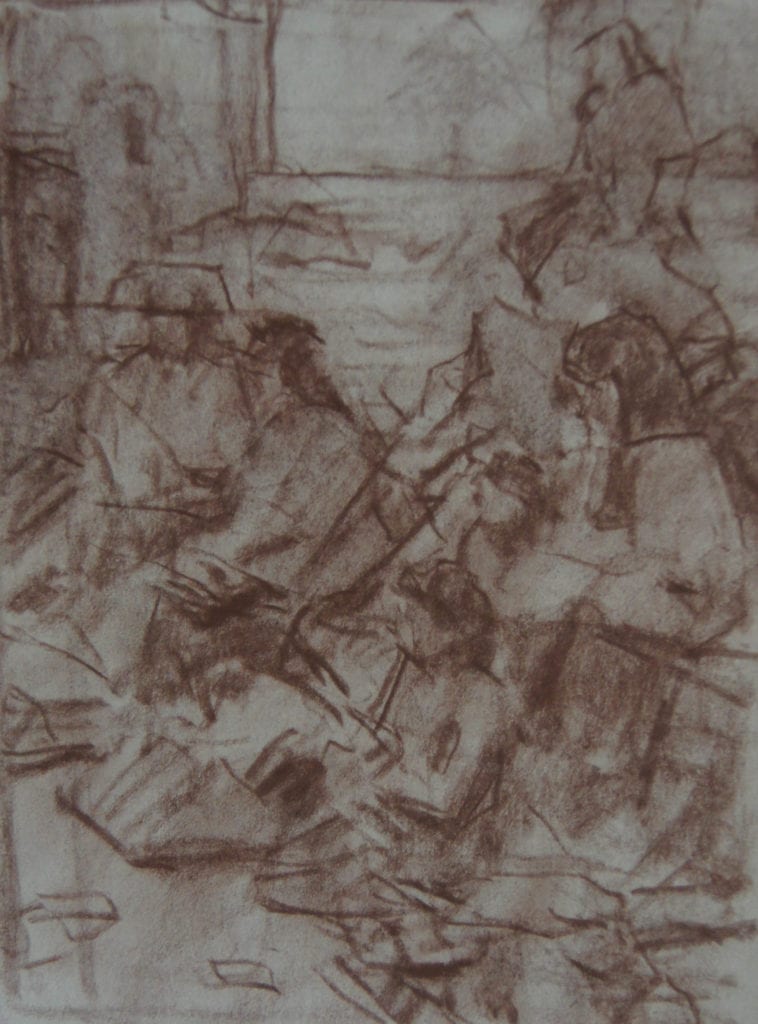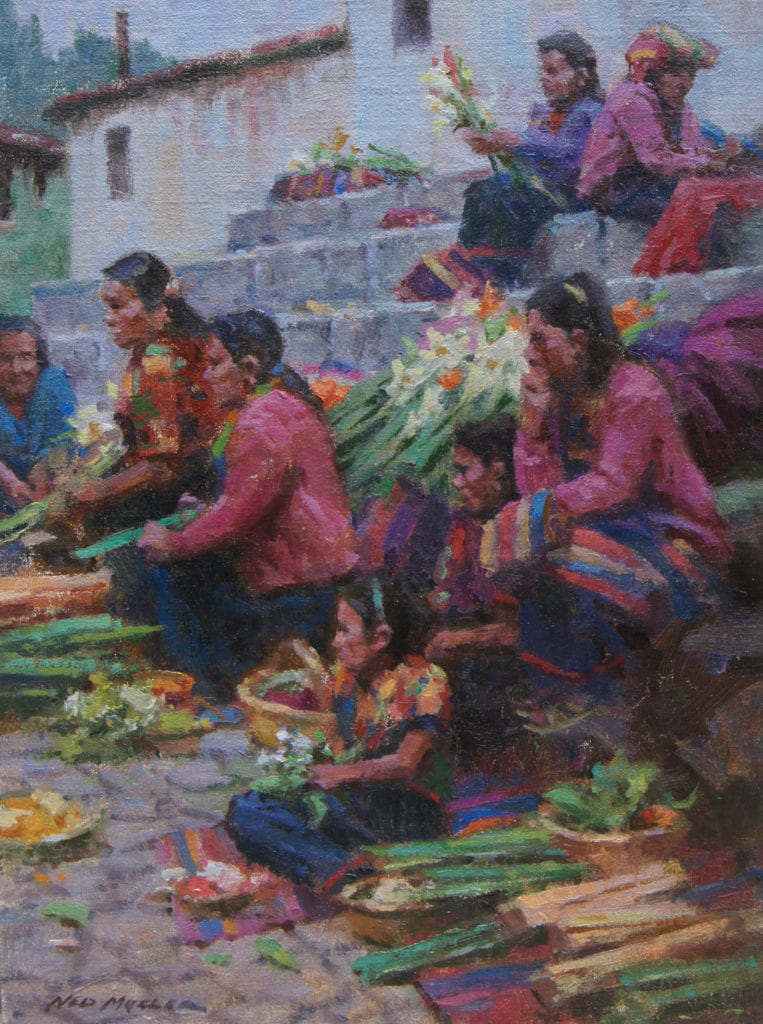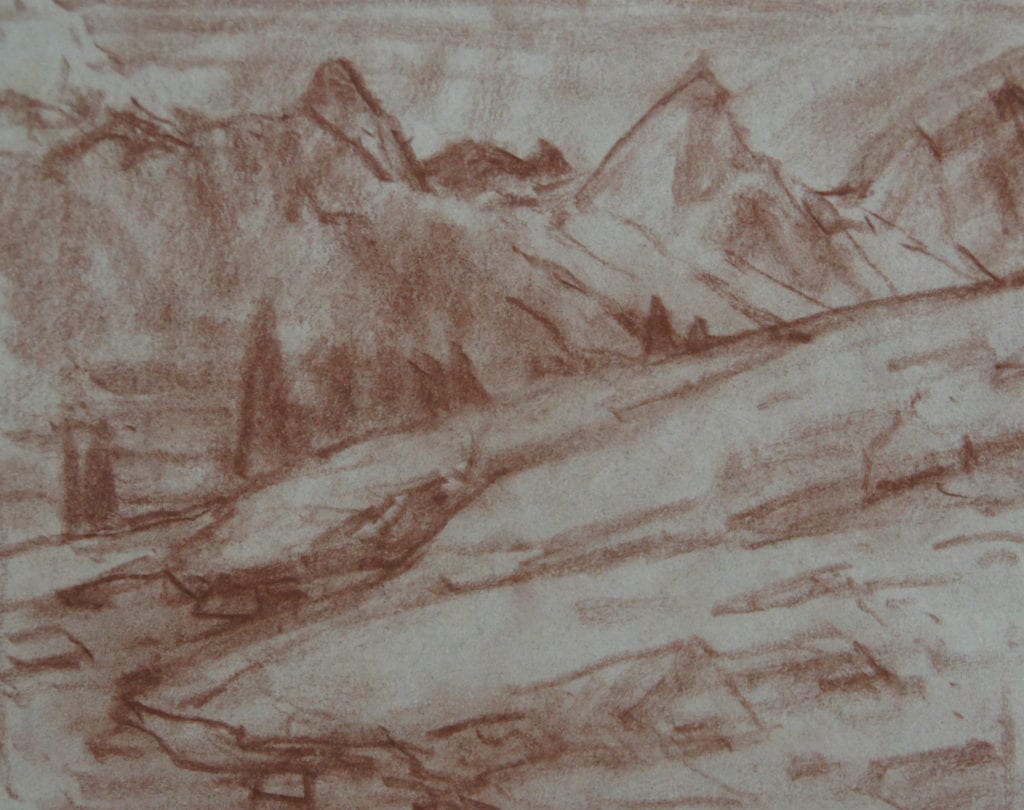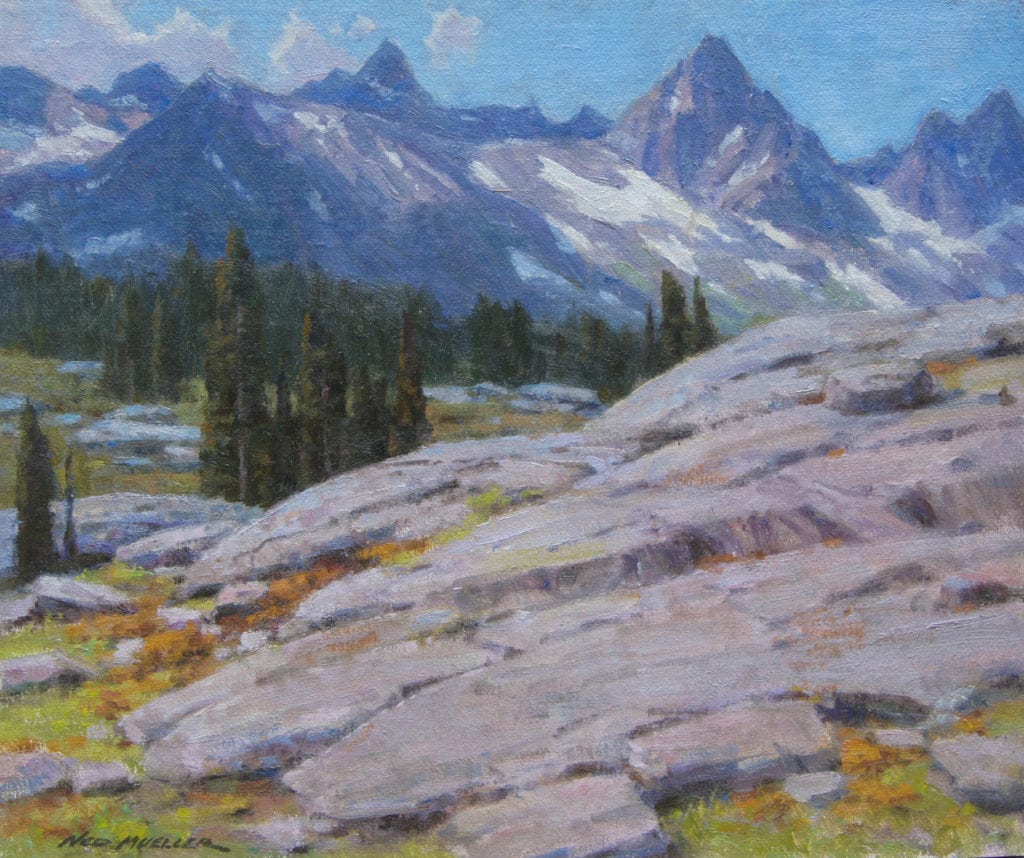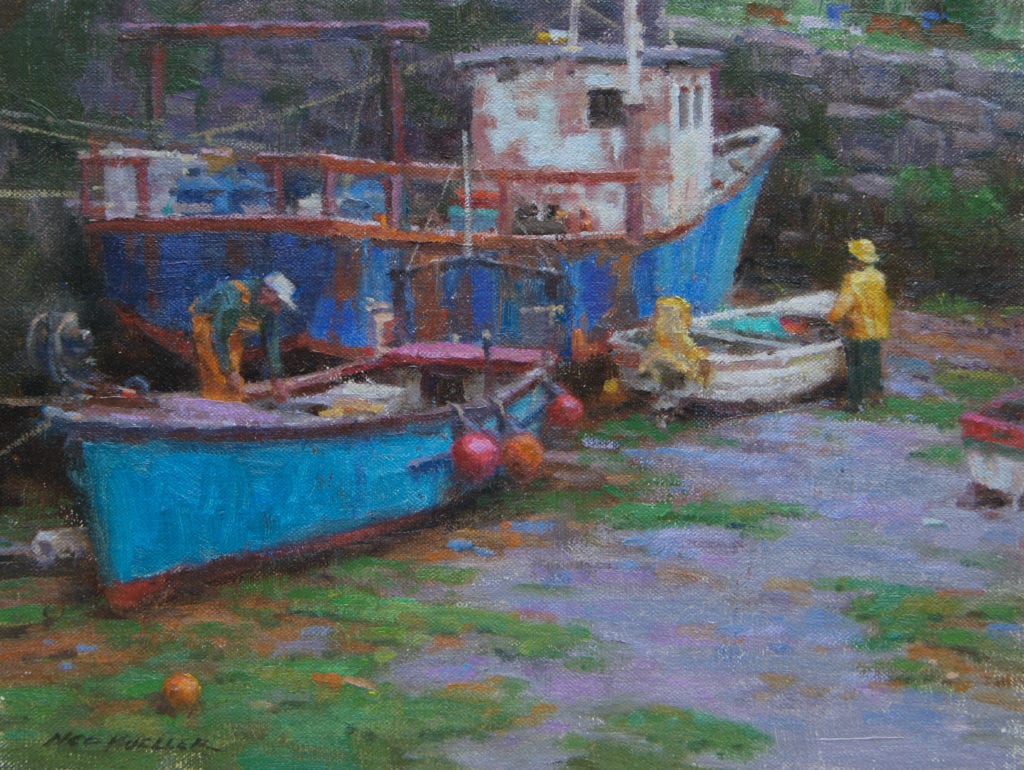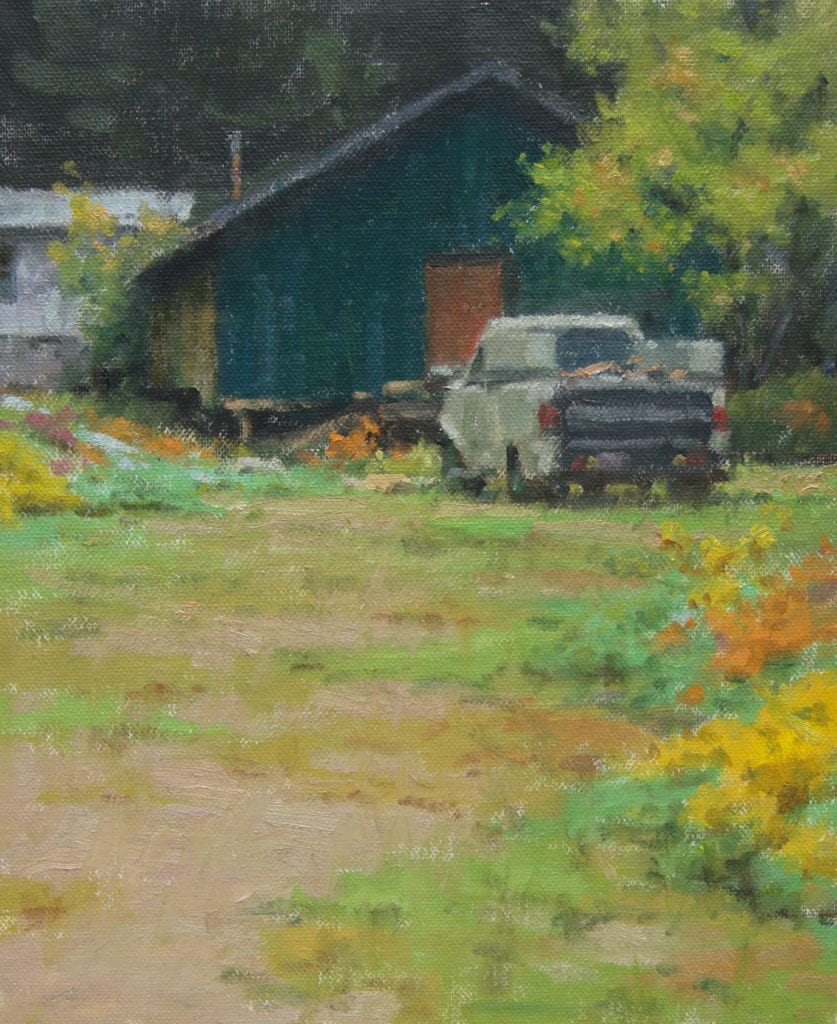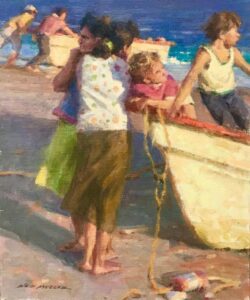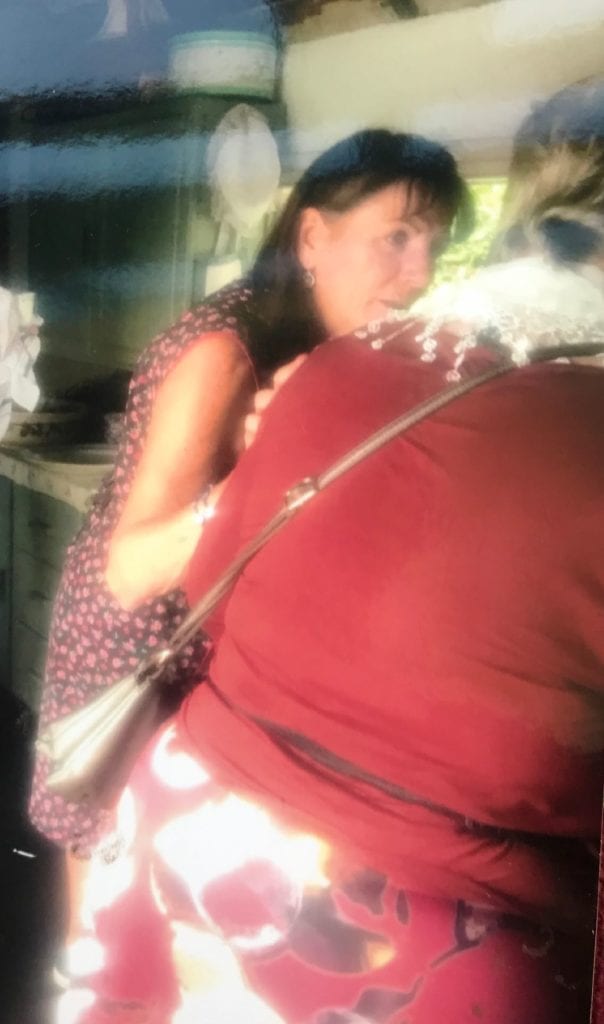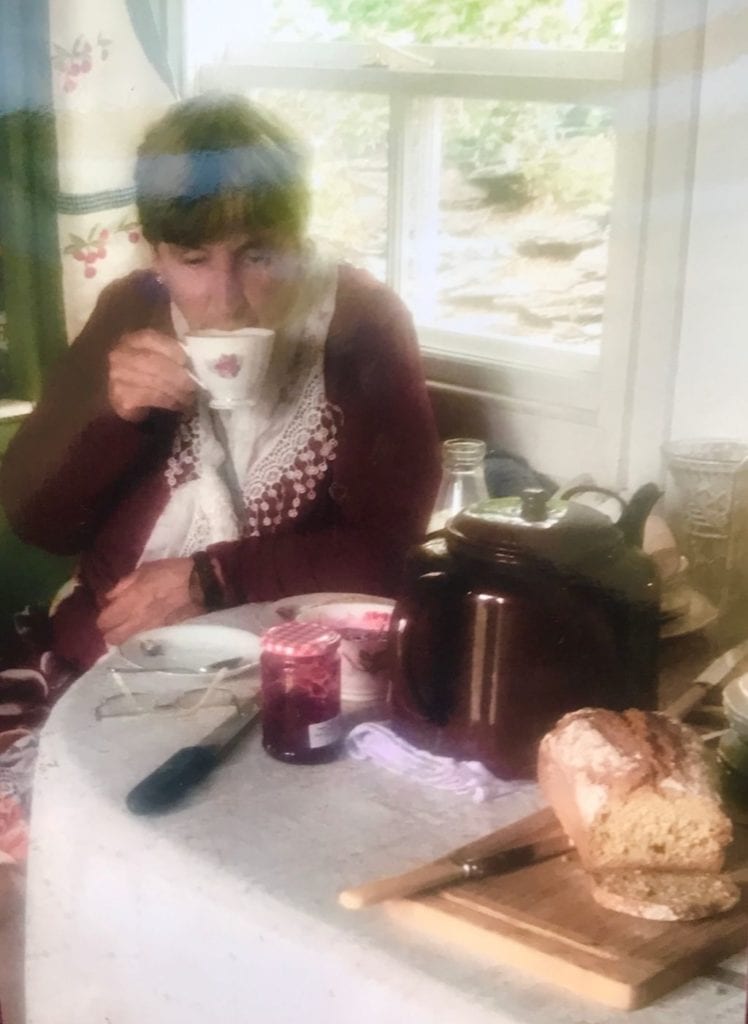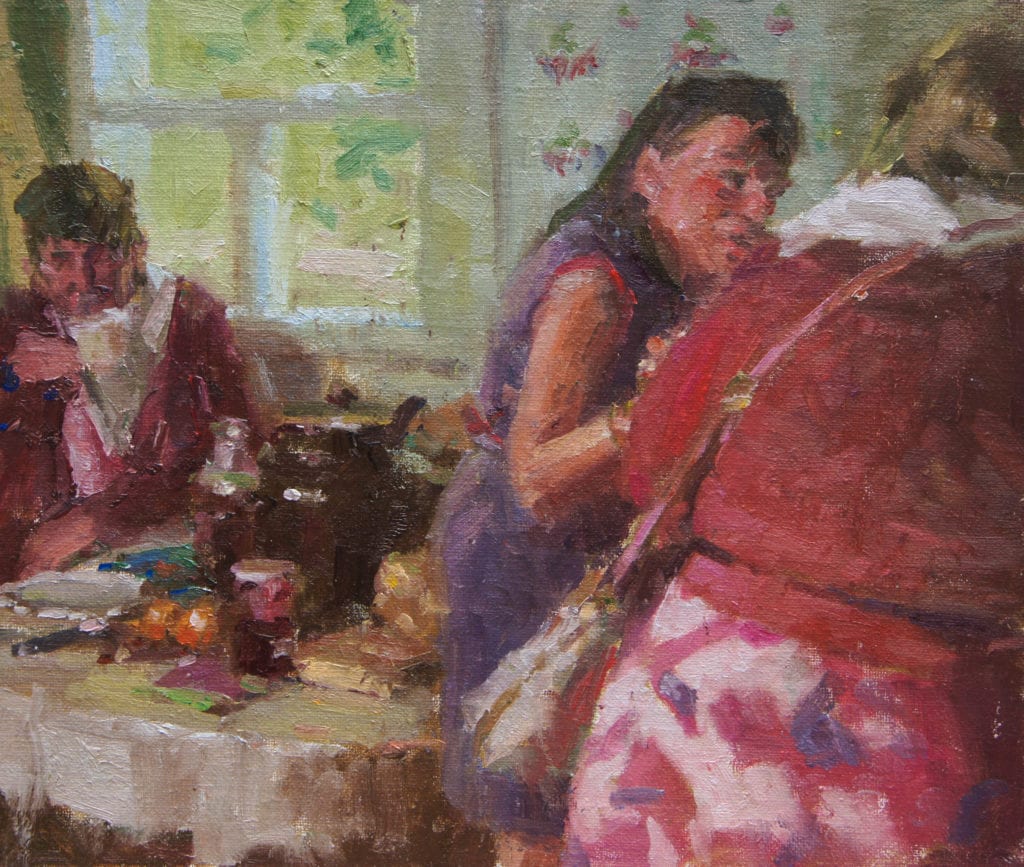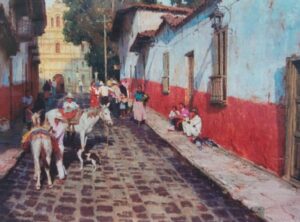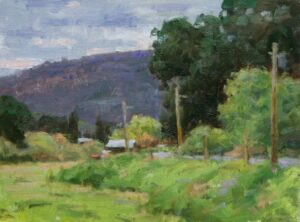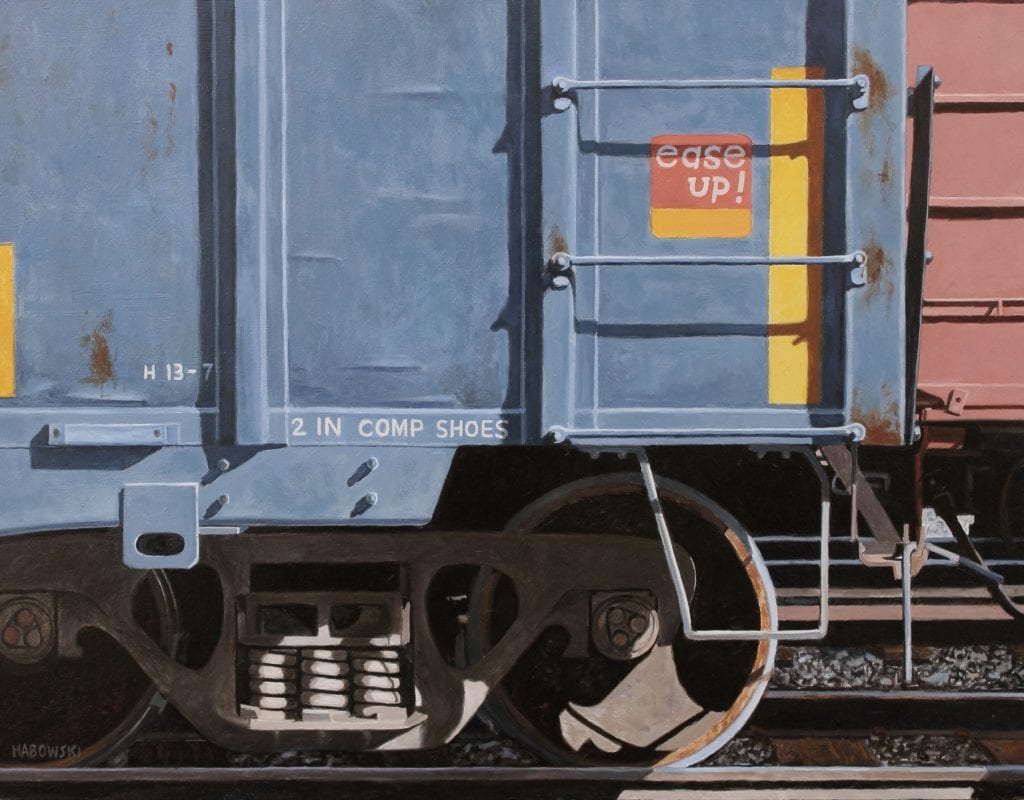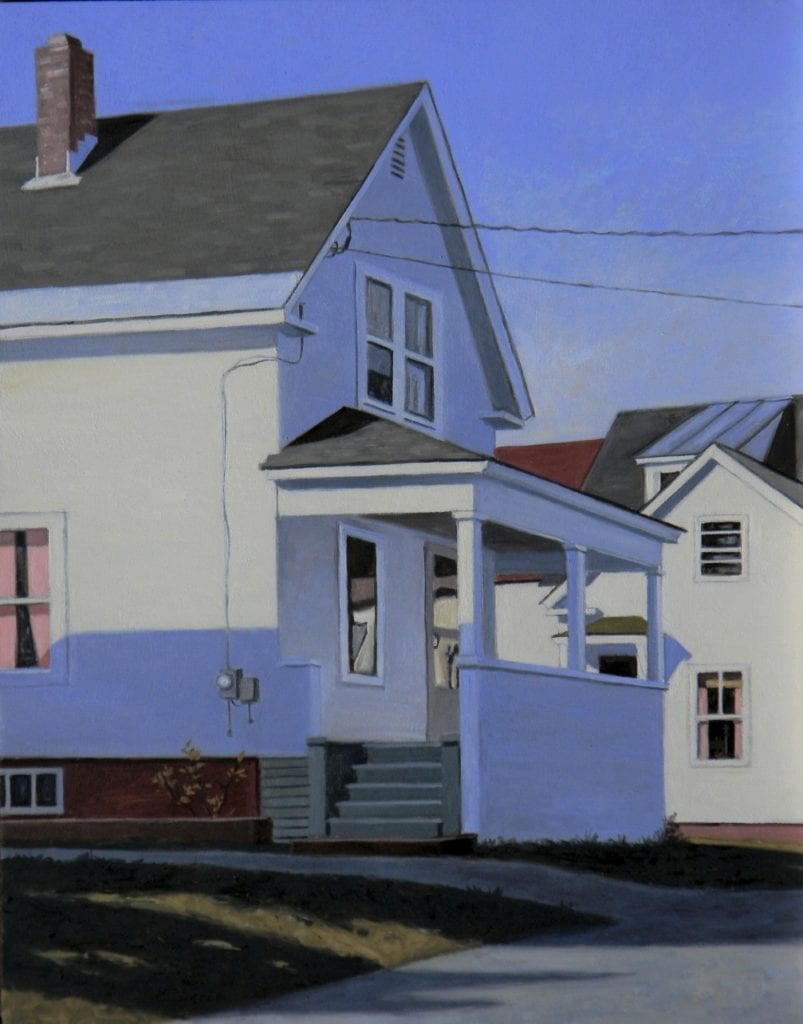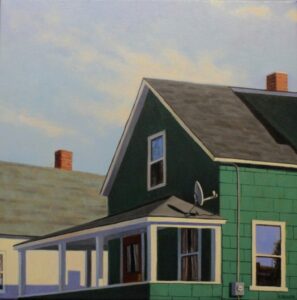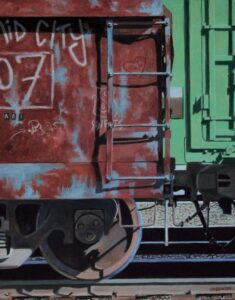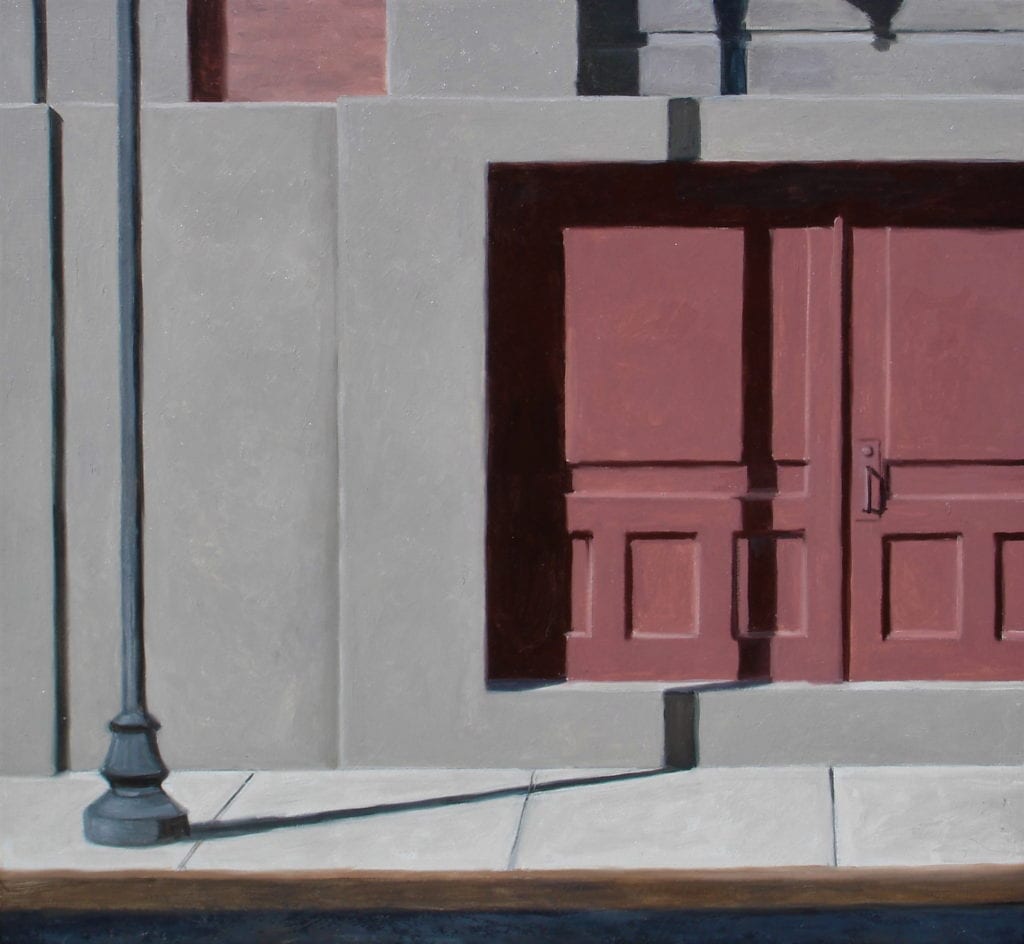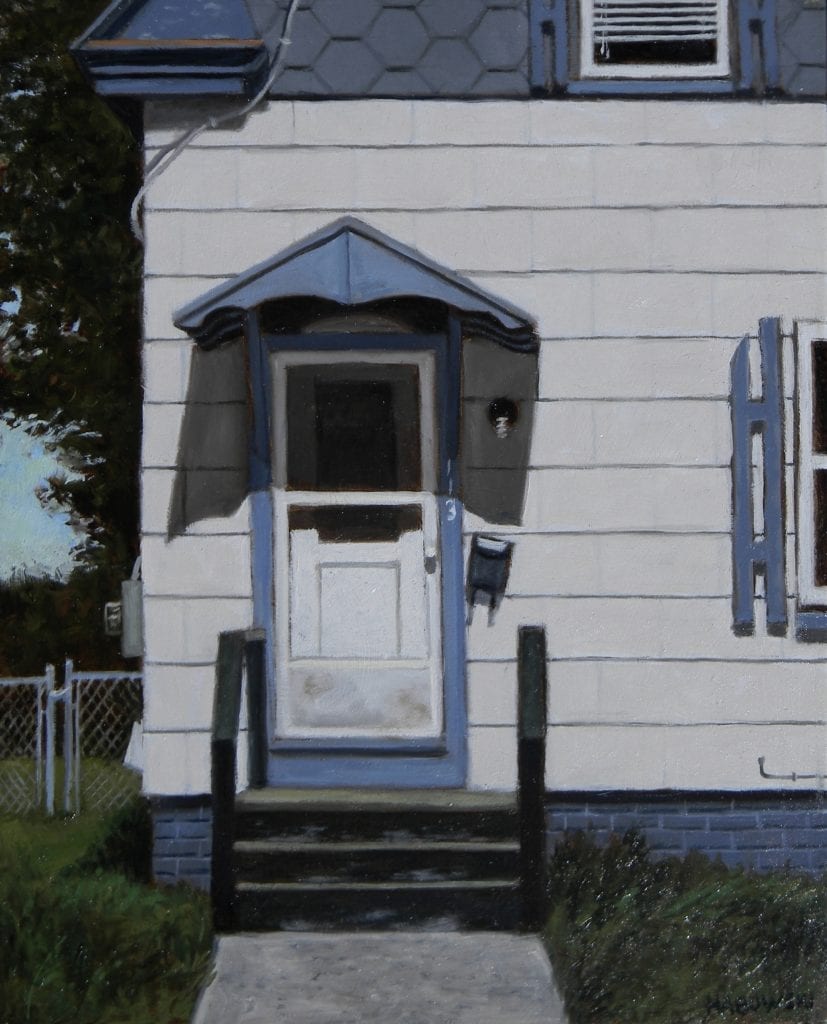Art historians frequently talk about an artist’s “style” and it can seem as though the conventional western art history narrative is mostly about “style”. As a result, a lot of artists feel pressure to land upon a unique style as soon as possible. But style is not a superficial thing. It is not a question of whether you flick your brushstrokes or obliterate them.
My current favorite painter has said, “You don’t have to worry about developing a style. Style is nothing more than a collection of habits.” While he’s partly right, it goes deeper than that. Because how do you get these habits? Why do you get these habits?
Style is the realization of your idea of the purpose of art.
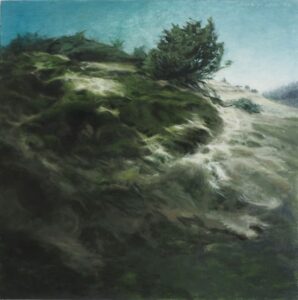
16″ x 16″ – Oil on wood
When we say “art” we think we’re all talking about the same thing. We aren’t.
To some people, “art” requires, as Robert Hughes writes, “the shock of the new.” Those people are looking for something they’ve never seen before, art that surprises them.
Some other people have zero interest in novelty and are looking for art that makes them feel and think about the human condition.
Some people want “art” to morally and spiritually uplift them. Still, other people want art to comfort and to celebrate beauty.
You’ll observe, as you study art history, that big shifts in “style” follow big changes in the consensus of what art is and what it’s supposed to do.
A piece of art can only succeed if it has artistic integrity; that is if all the decisions that went into its creation — conscious or unconscious — are consistent in their goal. That is not the only requirement for an artwork to succeed, but it is foundational. An artwork that tries to do X while in their heart the artist believes Y is conflicted and that conflict will show, usually not in a good way. So the first thing you need to do is get a handle on why you paint at all, what are you trying to accomplish, what do you get out of painting or what are you trying to get out of painting?
Because your reason for painting is a question of identity. Every stroke, every decision you make, about subject matter, lighting, treatment, comes from who you are and what you value. You may not know who you are and what you value but your paintings will tell you.
And this is where it gets interesting, because you may find that the paintings that you just can’t resolve, the ones where you just can’t get them to sing, may be lies. People talk about how you need to have “passion” and I hate the word “passion” because its ubiquity means people throw it around so it has no meaning. Forget “passion”. Let’s talk about the question, “What gets a rise out of me? What do I care about? What do I believe in? What do I love?” That’s what you should be painting.
You may not know the answer right off. Once again, your paintings will tell you the answer. If you find yourself painting beautiful women over and over, well gee, maybe what art means to you is the celebration of beauty, period, and not just any beauty, not, say, the beauty of urban architecture, but a very specific kind of beauty, the beauty of youth, the excitement of sexual charge, the elegance of anatomy. Maybe these are the things that you care about. And say, you try to do a still life, because you never do a still life and you figure, gee, I guess I should try a still life, and you put together a wine bottle and a piece of bread and some grapes and you cannot get this still life to work, then you have just demonstrated to yourself that you’re only painting this thing you don’t care about because you’re following “should’s” and not your heart.
The art that you can breathe into life, the art you can make sing, will be the art that is a natural expression of your values.
So one basic component of style is what you’re going to paint. And that leads us to how you’re going to paint it, because that, too, is existential.
When we first start making art, whether we’re aware of it or not, our first visual literacy comes from the photograph and illustrations we see in popular culture. The decision to learn to paint means we are aware of the concept of painting — we’re not inventing the wheel — and we may have gotten that concept from photographs of paintings through the mass media or we may have seen some physically, but we were probably inspired to paint because we saw a painting and said, “I want to do that.” That first artist who inspired that reaction, who “got a rise out of us,” may be the first one we try to emulate. At the time we probably have no idea why that artist made us want to do art, we just have to follow this impulse, and if we get good enough at emulating this artist, we will reach the point where people who know about art will say, “Oh yeah, nice piece, but it’s derivative.”
Not to worry. We have successfully reached our first step towards our own style. Time to move on.
It would be helpful if we could drill down and figure out, why did that artist get a gut response from us, what is it about their work that actually got us to get off our butts and attempt to emulate them? Because that would be useful information. But we were probably young when that happened and incapable of doing that drilling. Doesn’t matter.
The next step is to find the next artist who moves us. And then the next one, and the next one. Sooner or later, we will have emulated enough artists — and acquired habits — that no one can look at our work and tease out “oh yeah, copying this guy, that guy, and the other one.” So willy-nilly, by following impulse, we will have stumbled on a style.
We think we’re done. We’re not done.
This is only the second step. We have a collection of habits, yes, but some of those will be bad habits.
Say, for instance, one of the people we emulated was Sargeant, because we loved his bravura brush strokes. While the bravura brushstroke, for Sargeant, was an expression of economy and an attempt to achieve freshness, we might have read it as an expression of an exciting, flamboyant and godlike master. Basically, we emulated him partly because we wished we were “that guy.” We’re not that guy. Sargeant wasn’t even that guy. Those rockstar bravura brushstrokes are not us, but we wish they were. They are an example of what might be for us, a bad habit, not because we’re searching for economy and freshness, but because what we really want is to be a rockstar, with fans, and we haven’t achieved that level of economy because we’re busy saying “Look at meeeeee!”. In every one of our bravura brushstrokes, there will be a lie, a sense of superficiality and a sense of being forced. It is impossible to lie in a painting; it is like handwriting, and even the visually illiterate can feel the lie, whether or not they can articulate it. Those strokes are in our way.
Another very accomplished artist recently said to me, “Art is a matter of putting the time in. What you do every day, you get good at. You put in the years and eventually you’ll get good.” This is only partly true. Because as you repeat your bad habits, you entrench them. It is very possible to work your head off and stay at the same level of mediocrity for the rest of your life. So it is not enough to have accumulated a “style” and to have found a “voice”. Now you want to find your best voice.
And here is where you need to find an objective reading of your strengths and weaknesses. Once you know your weaknesses, search for artists who are good at what you can’t do. I don’t mean, they’re good at landscapes and you’re not. I mean, the way they handle form or composition or some kind of technical issue is a solution to a problem you’ve had in your work. Study them. If possible, take a workshop with them or watch videos of them giving demos. And then if you can, find another artist with a different solution to the same problem and learn their solution, so you have options.
Now let’s say you’re painting figures, and you’ve decided to emulate Bouguereau because boy that guy could paint flesh. Well, a lot of people could paint flesh, and there are a lot of valid ways to paint flesh. Bouguereau’s style is a direct manifestation of specific 19th-century values: a painting should have within it nothing coarse or ugly, nothing harsh. It should be beautiful and edifying. So Bouguereau has no harsh shadows. His models are graceful and beautiful, even the poor — especially the poor — and in his work there is a yearning for the idea (if not the reality) of the noble, simple peasant. Above all, Bouguereau wanted to create a comforting world where everything is OK. So the light is diffused, with no harsh contrasts, and value scales are compressed within masses. Bouguereau developed his style as he did explicitly to adhere to that 19th-century value system that insisted everything should be soft and pleasant. It is consistency within his value system that makes his paintings work.
It is consistency within your value system that will make your paintings work.
I have heard more than one famous artist say that we should paint what we know how to paint. That works for branding but it will stop us dead in our artistic growth. A young superstar artist recently said, “I peaked too soon,” because he had found himself stuck with a brand, churning out essentially the same work that had made his reputation five years ago, and not only was his art stagnating: his soul was dying. Artists are like sharks; we have to move forward or we die. Moving forward, for an artist, involves experimenting, taking risks, and getting out of our comfort zone. Yes, we should follow what we observe makes our heart sing, but we should not churn out the same painting ad infinitum. It is one thing to achieve a recognizable style. But a style is not an end. It is a trajectory, a path that should last the rest of our lives. I wrote to this superstar and pointed out the careers of Bob Dylan and David Bowie, how they both continued to experiment after having achieved fame, and although they went through some tough decades of failed experiments, as a result, much of their later work was as good or better than their early work. I wrote to him, “You just have to get to another peak.” To my surprise, he was grateful.
Style is not something that should stand still. It must evolve, as you must evolve, because style is simply a snapshot of who we are at the moment, and the decisions that follow from that identity.
Because paintings do not lie, it is imperative to be absolutely honest in our paintings and honest with ourselves about who we are, what we value, and where we fall short as people. We become better painters and we find our style when we figure out how to get out of our own way and embrace life, with everything that’s beautiful and joyous and everything that’s tragic and scary, both within and without. Art is about courage. The way of the artist is the way of the sage, the shaman, the itinerant preacher, the warrior-monk. Style is a by-product of that path.
Ultimately finding your style is a matter of finding your best self. Ultimately, painting is a practice that will tell you who you are and help you achieve your potential as a human being.
